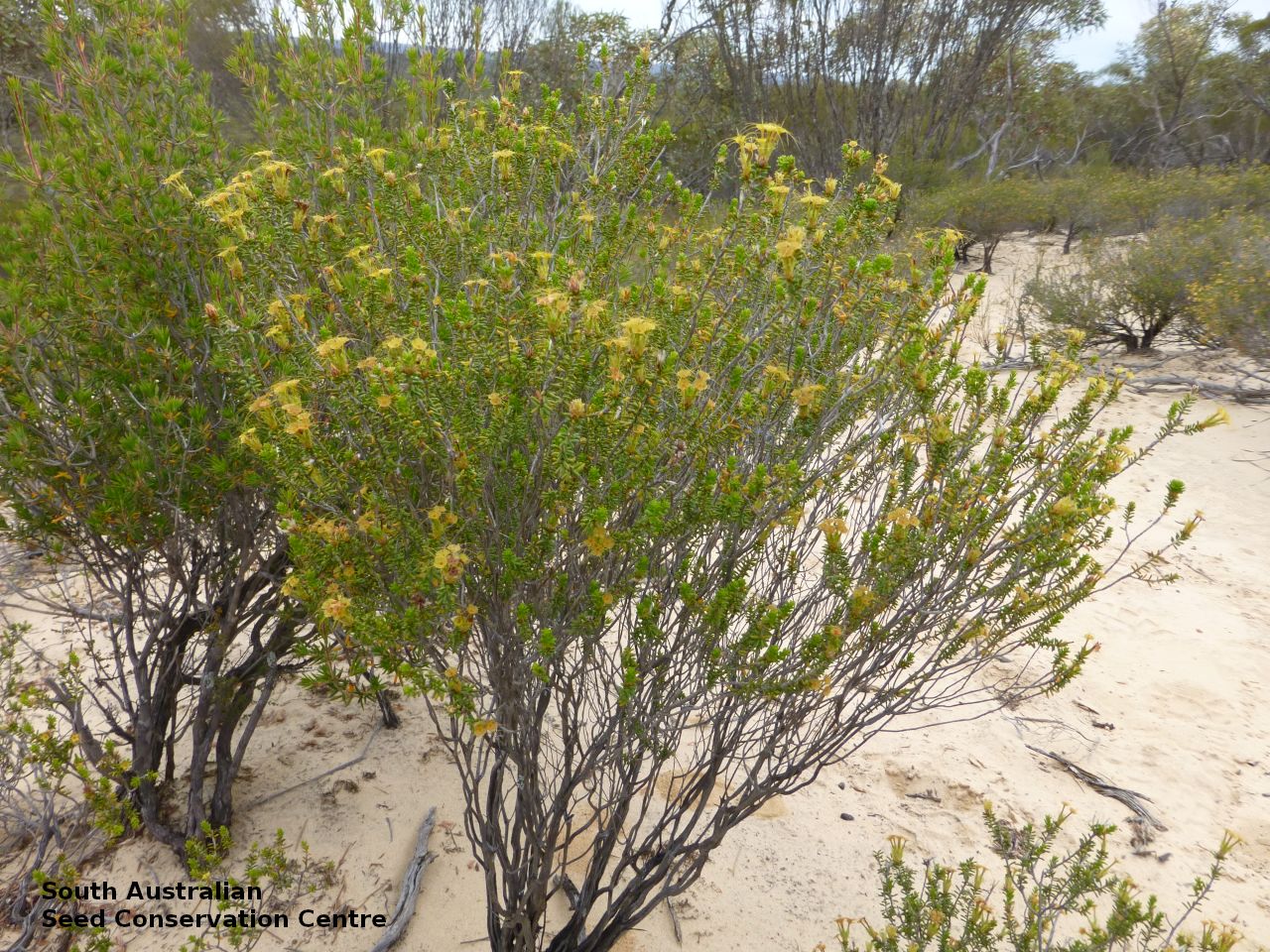

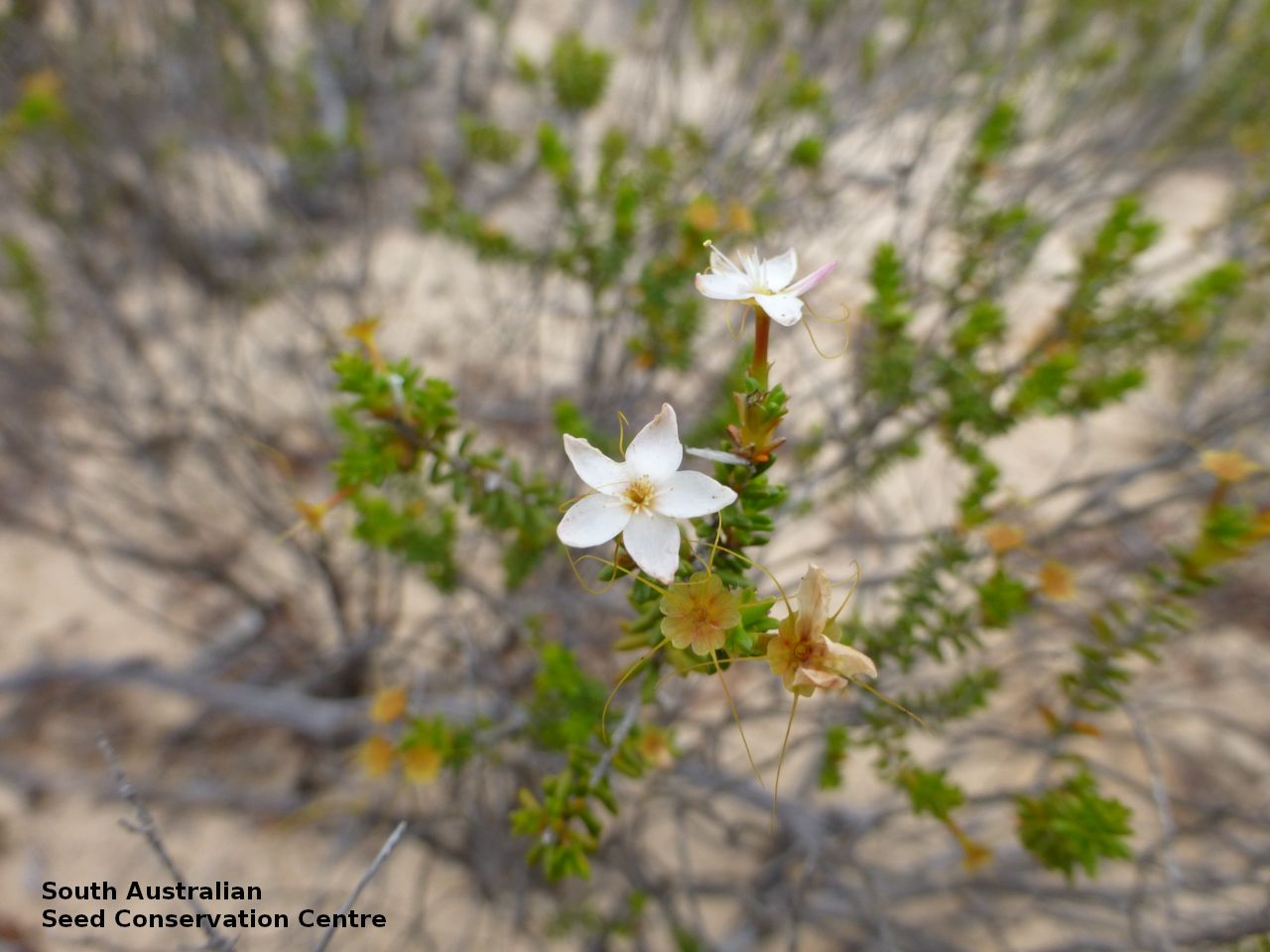
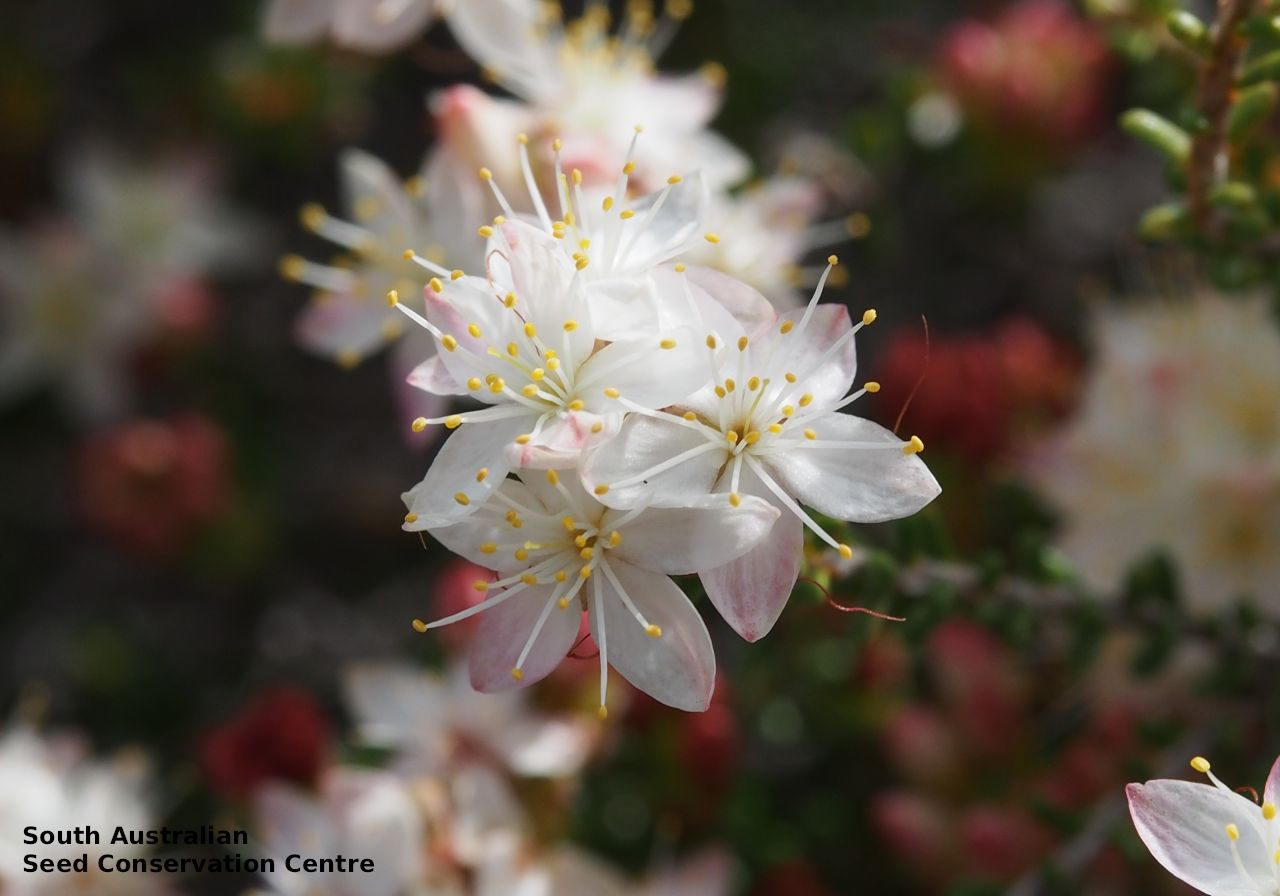
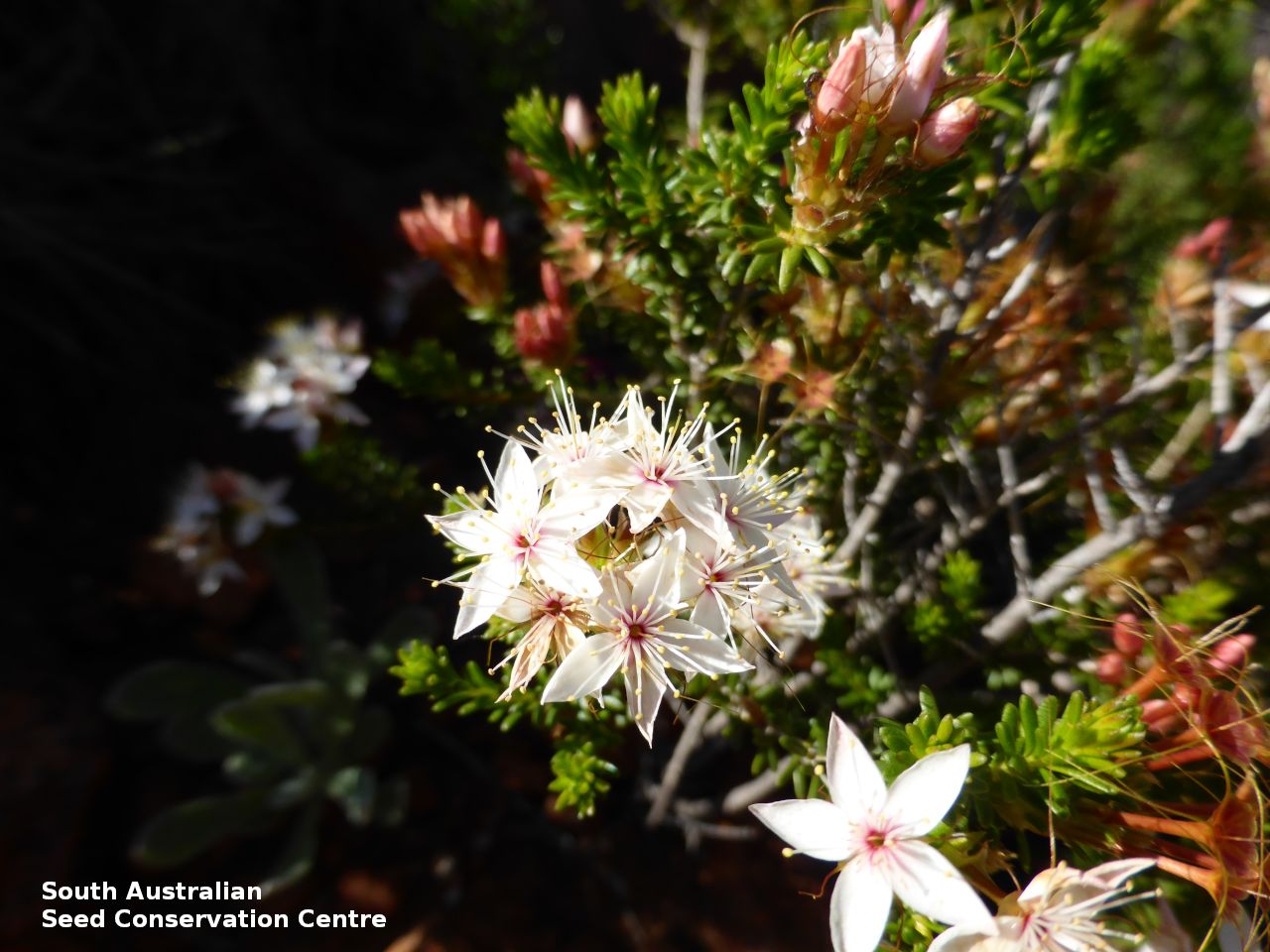
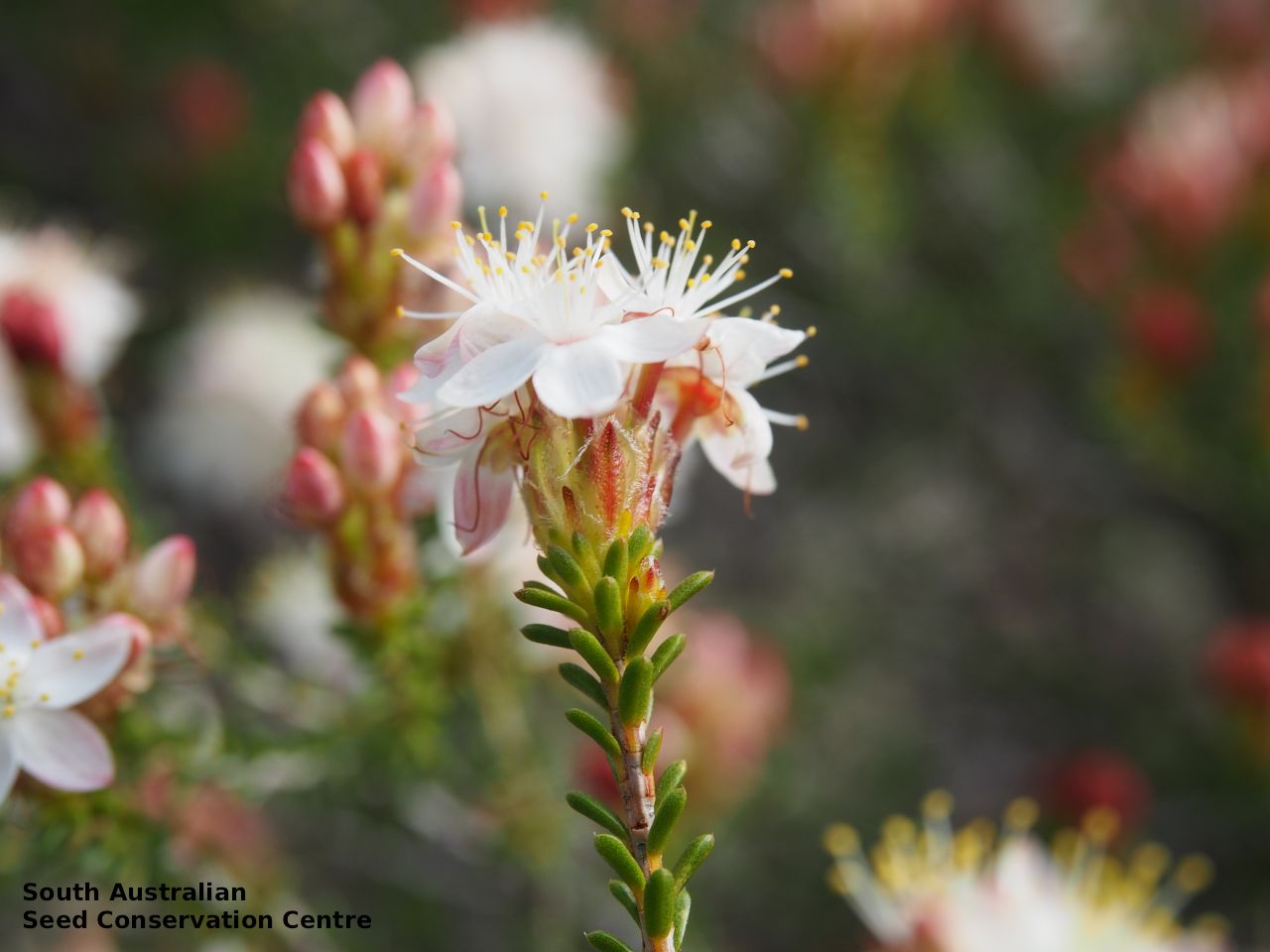
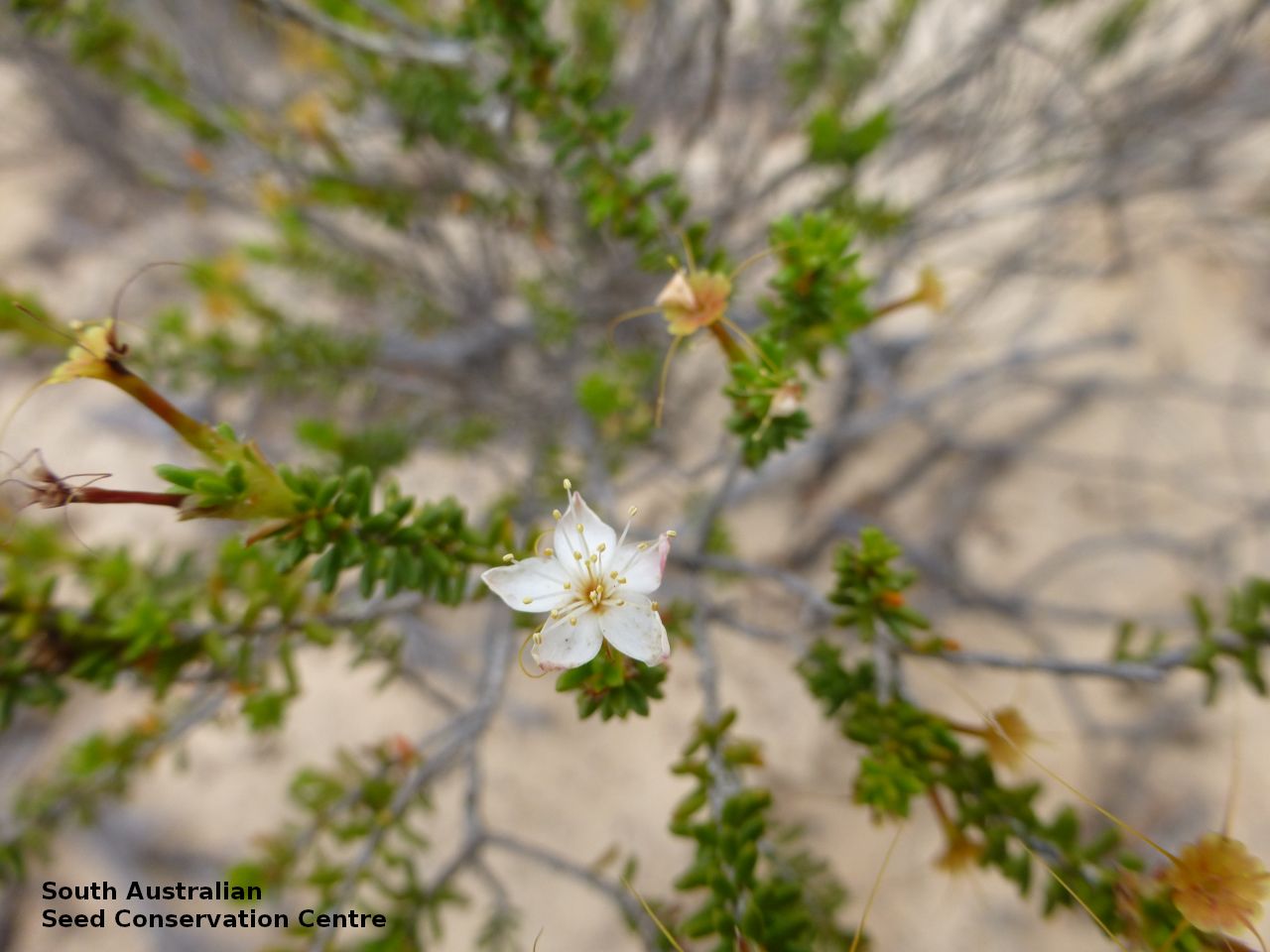
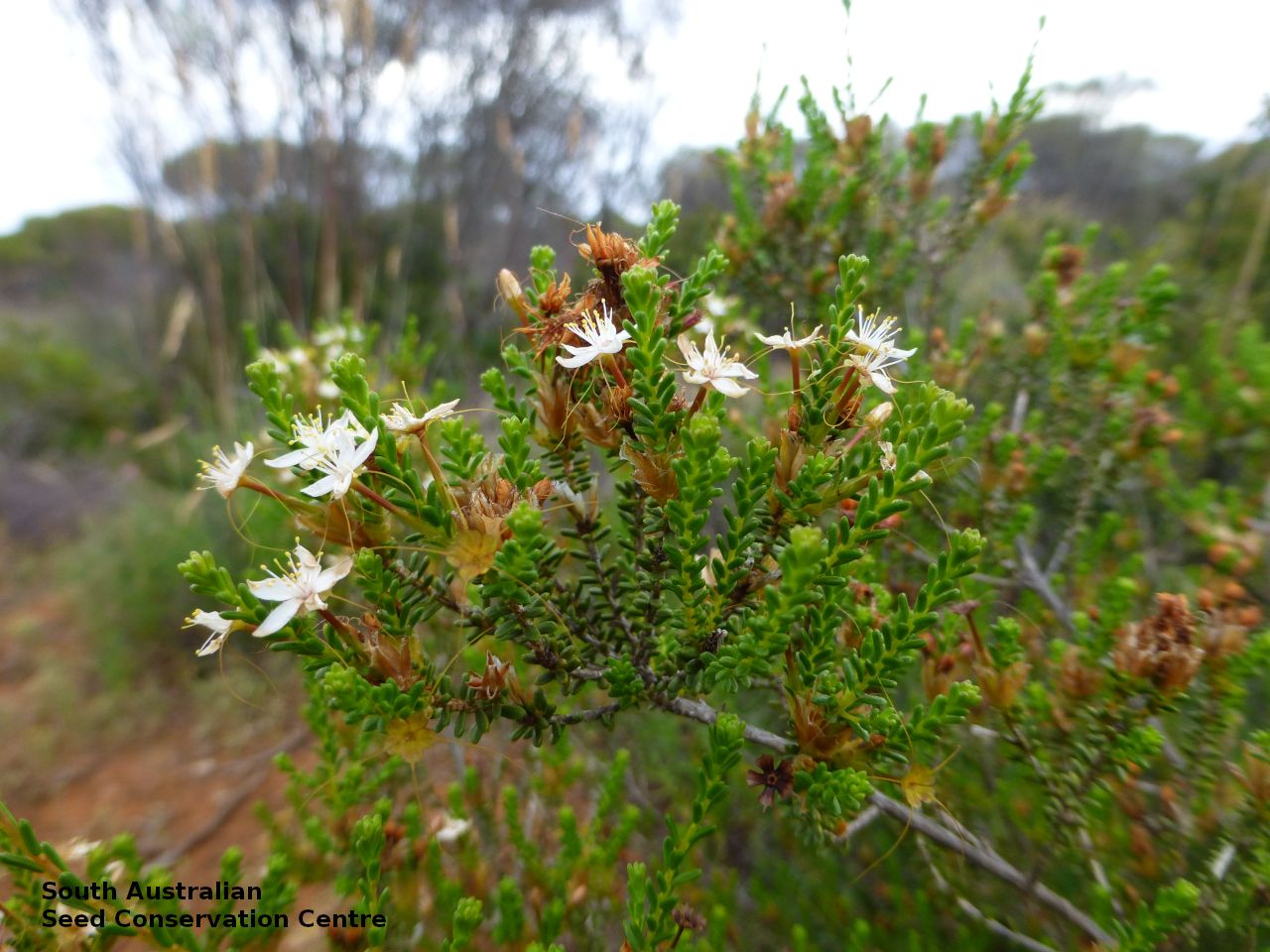

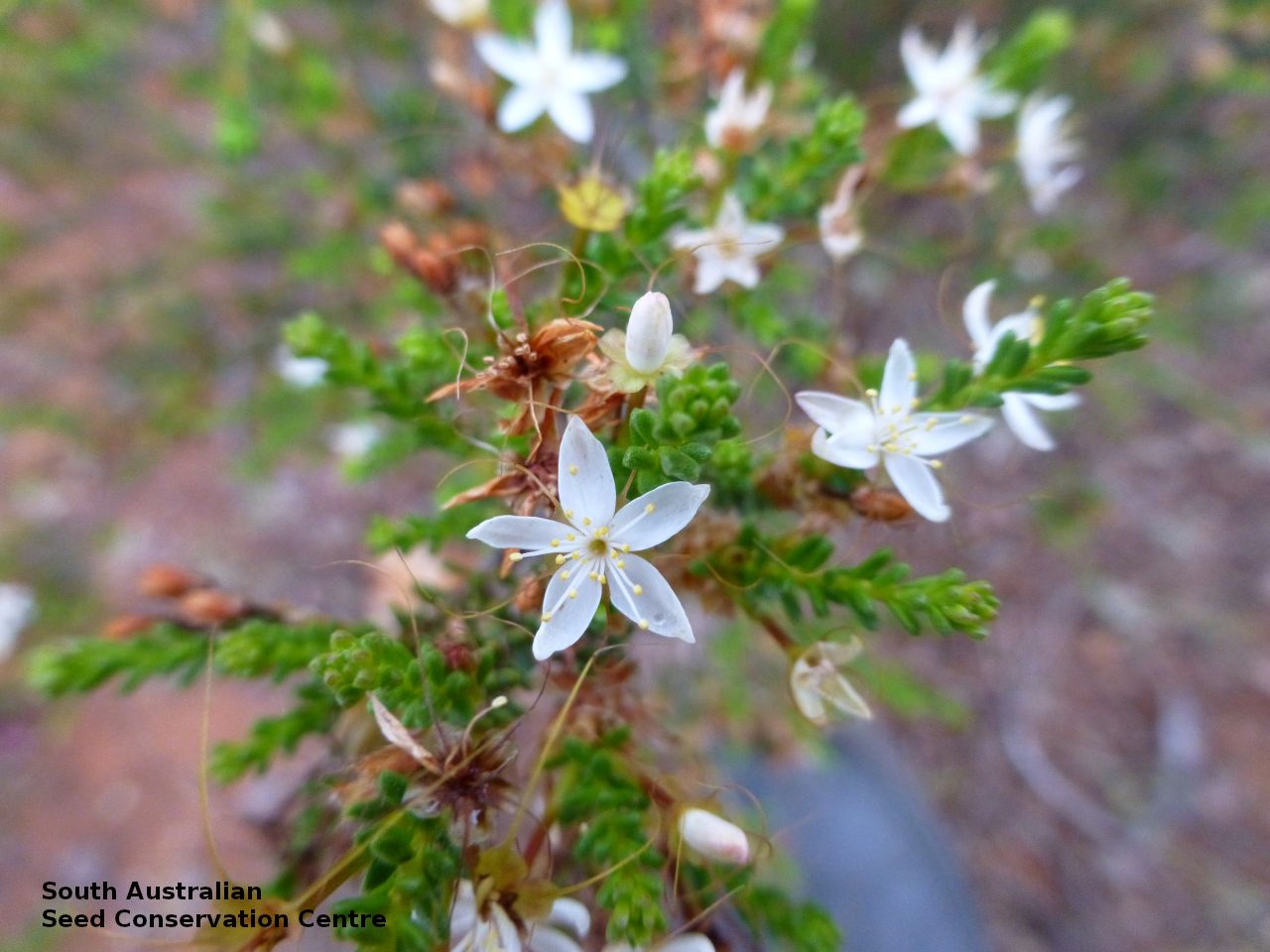
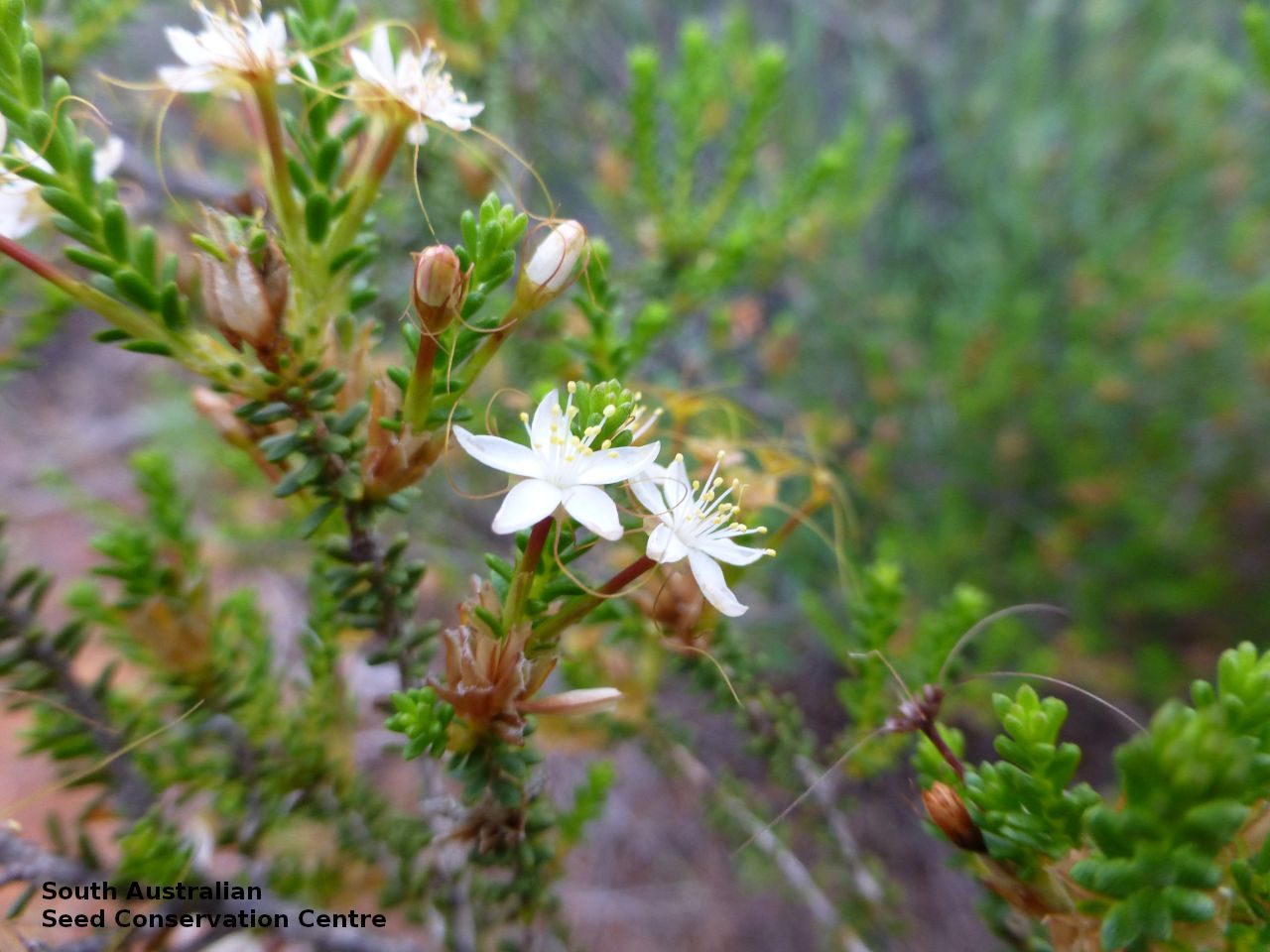
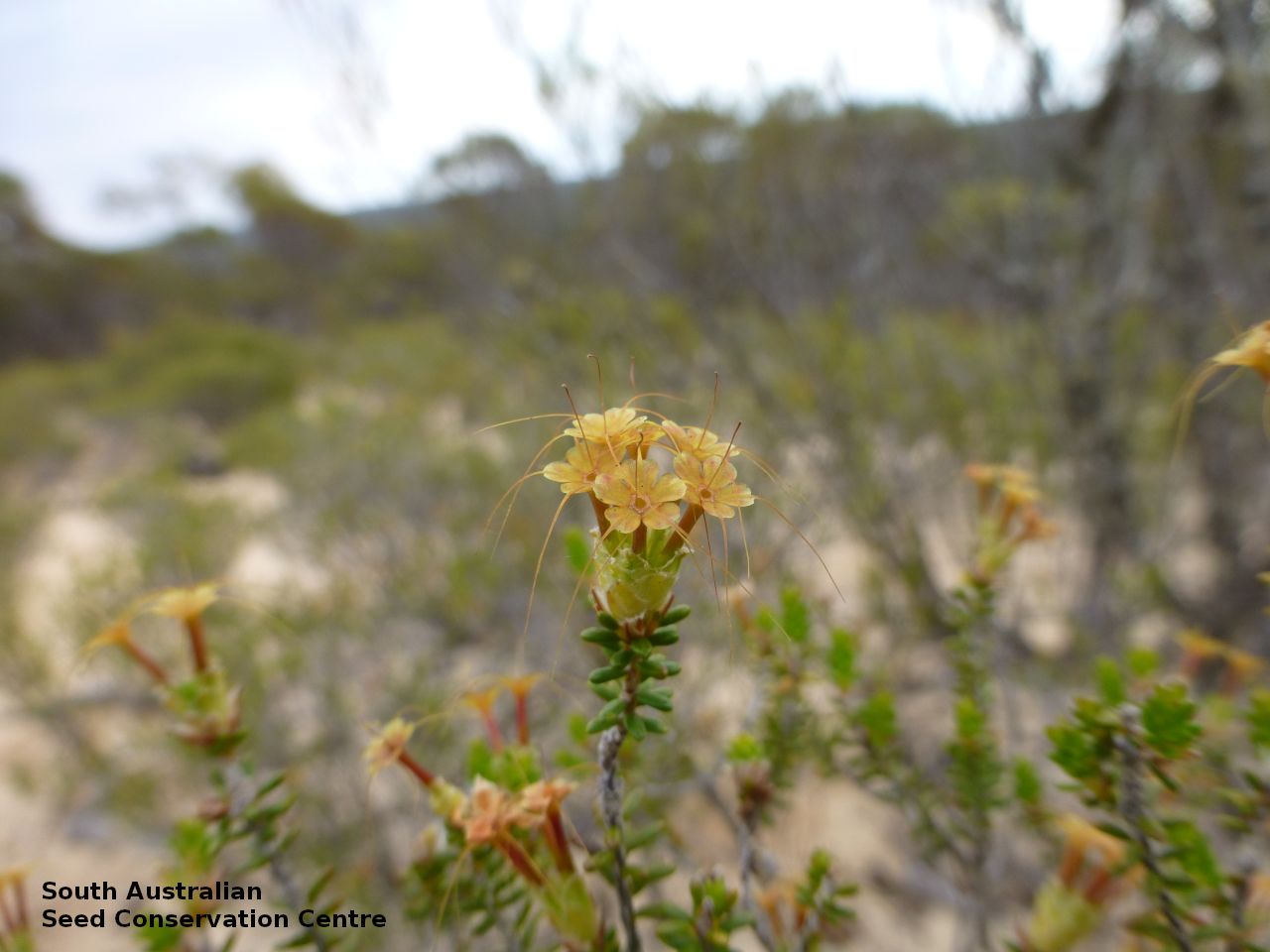


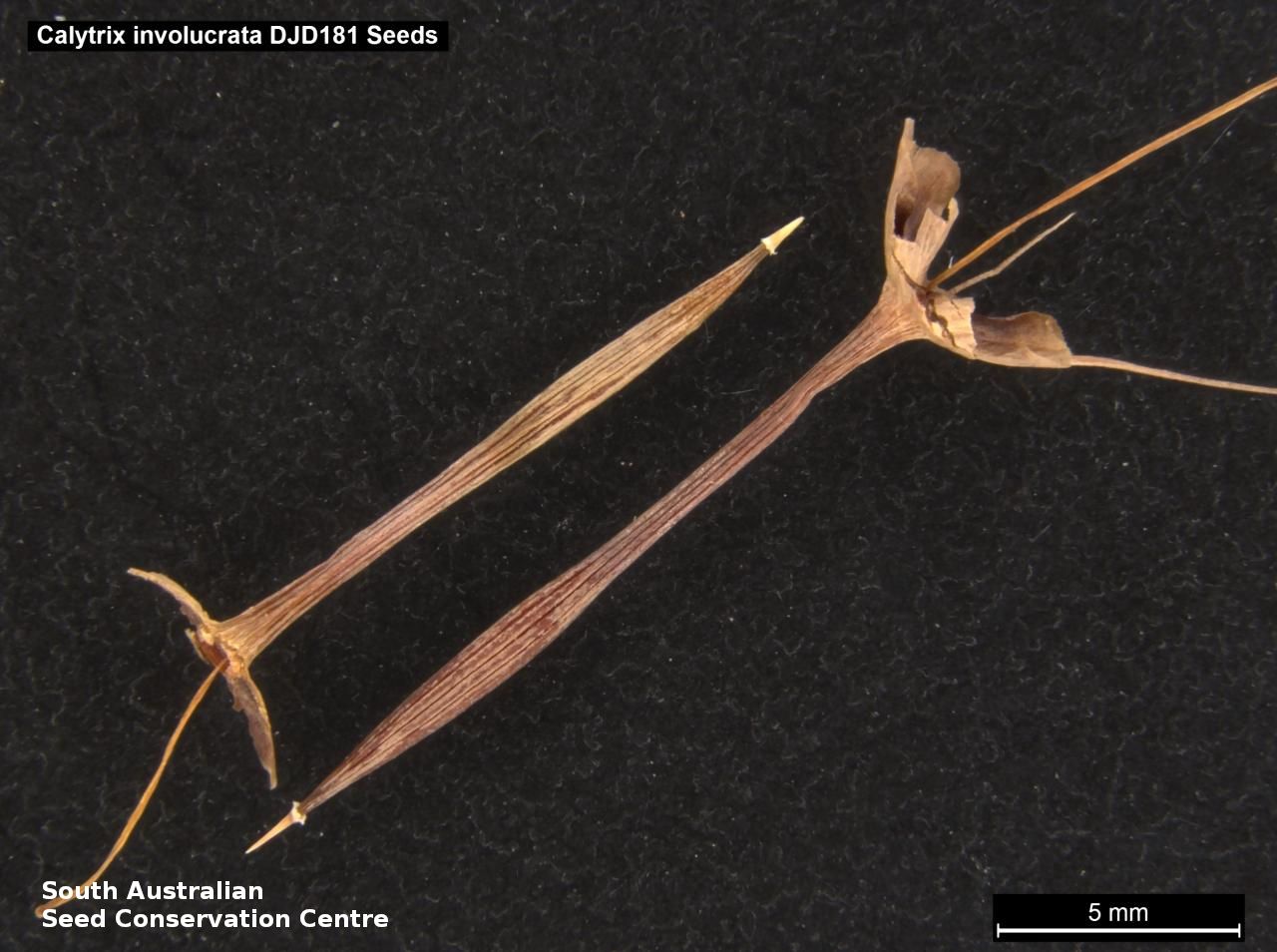
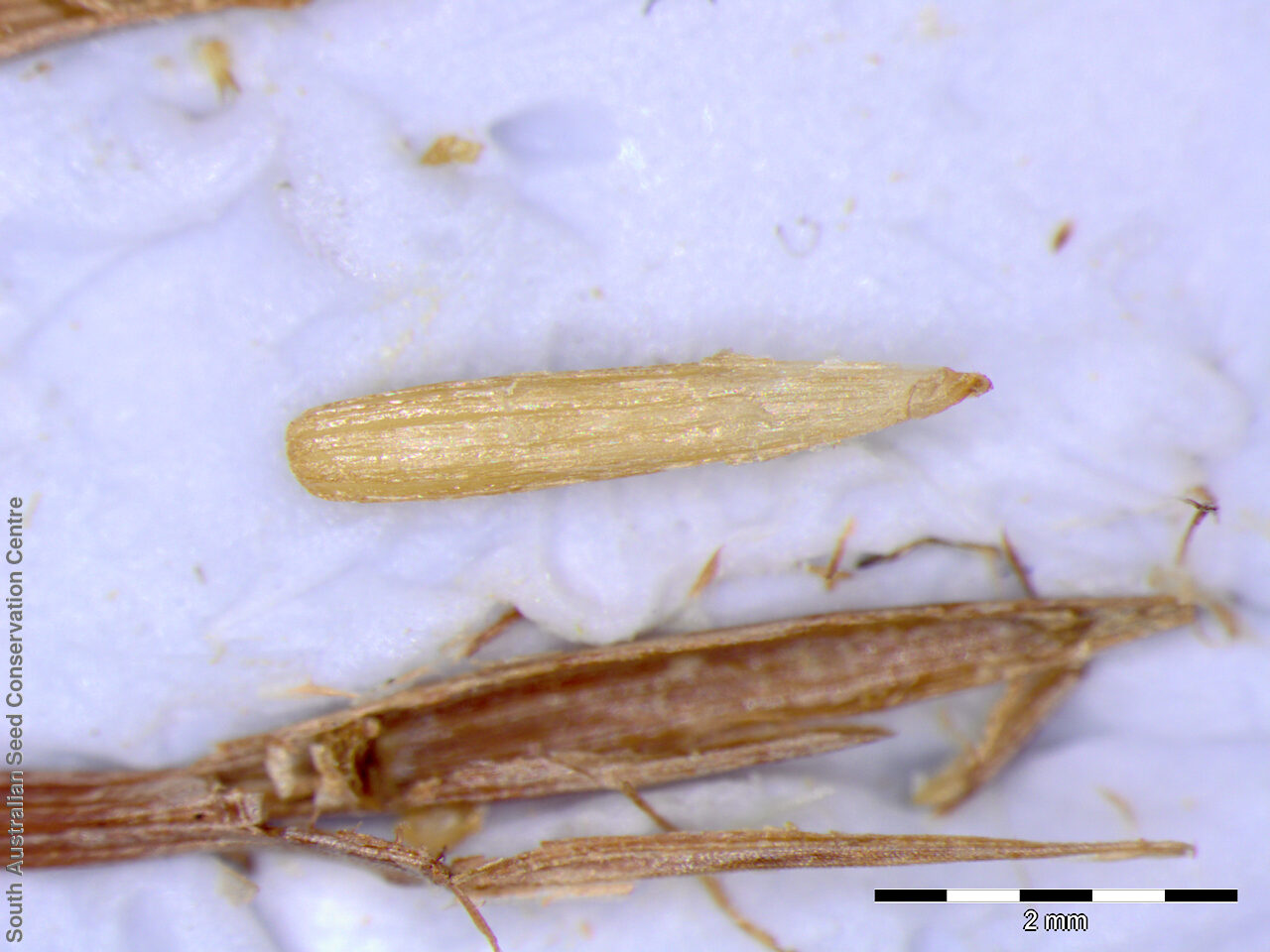
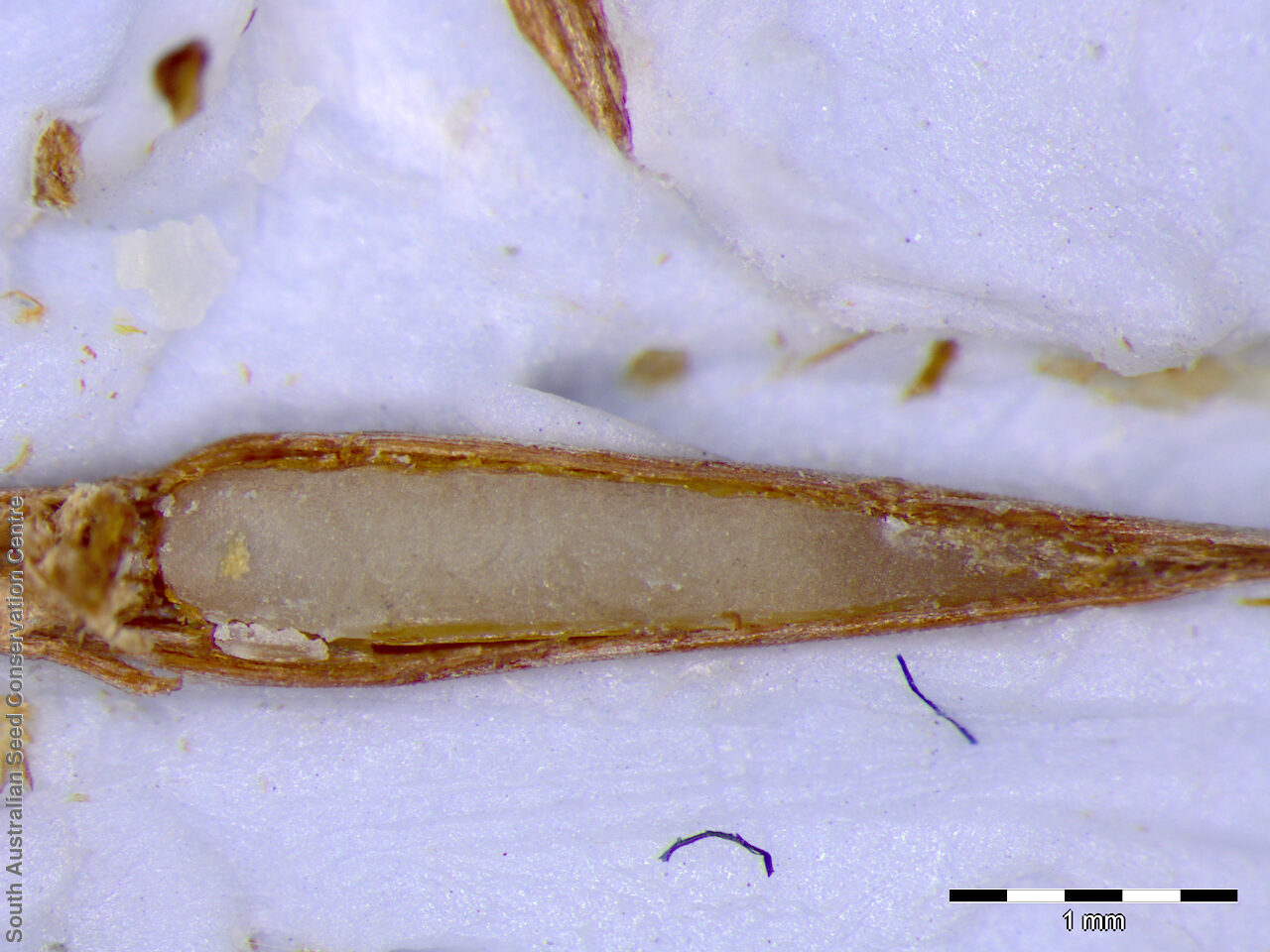
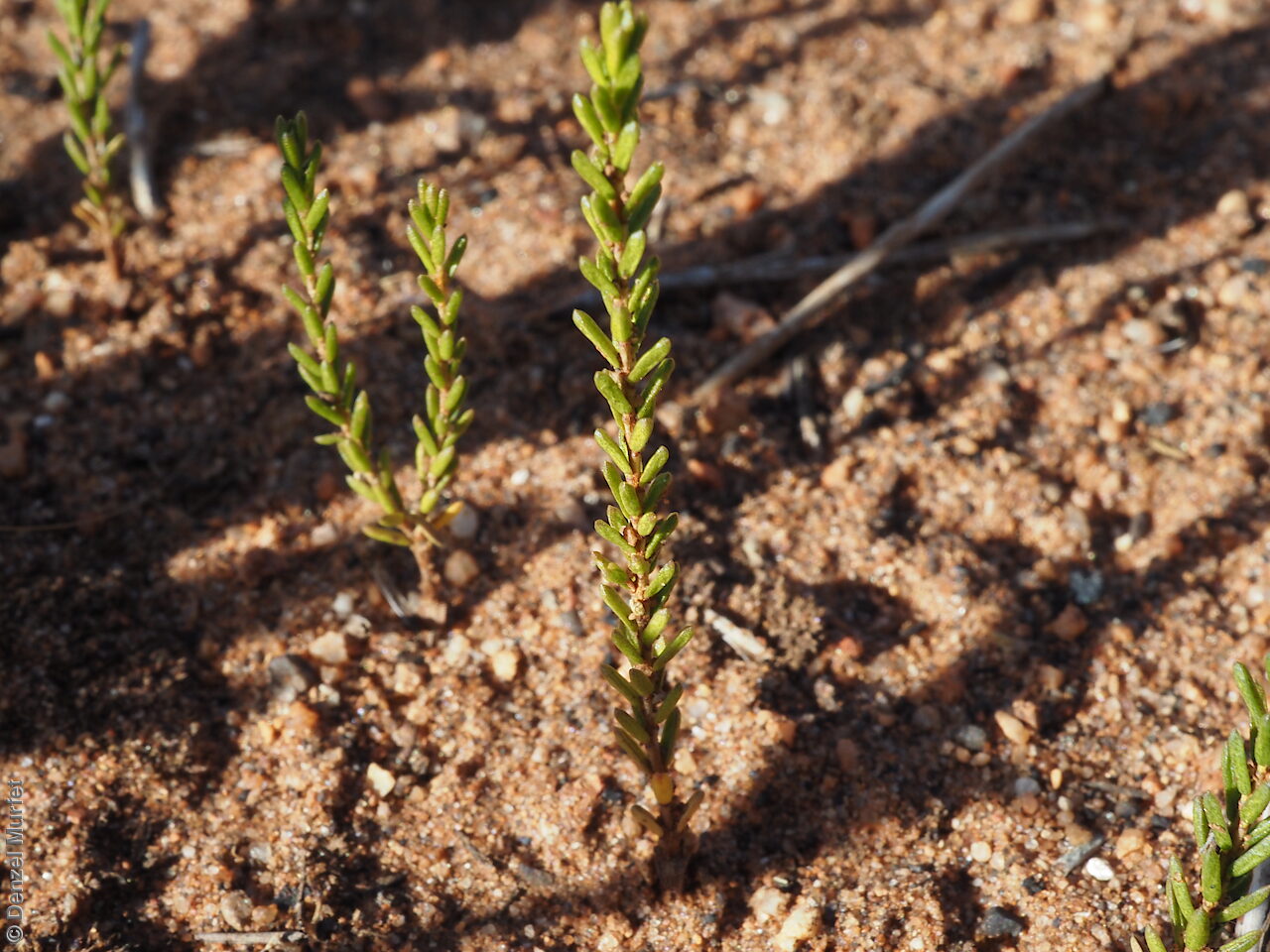

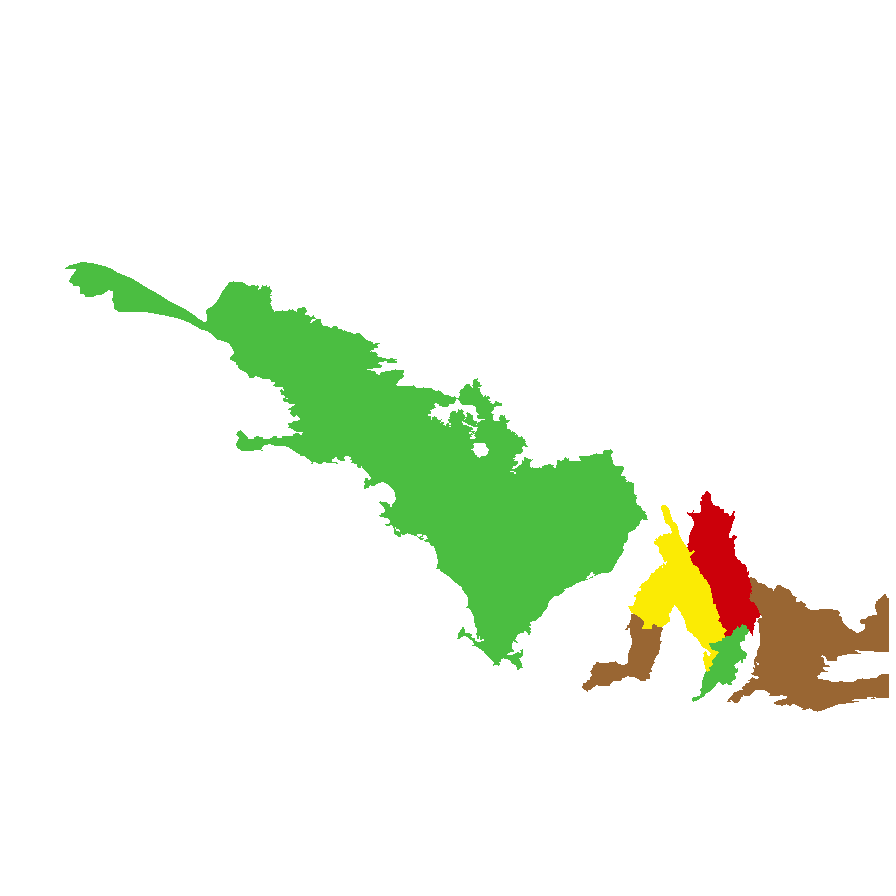
Botanical art
Etymology
Calytrix from the Greek 'kalyx' meaning calyx and 'thrix' meaning hair, referring to the awns on the sepals. Involucrata from the Latin 'involvere' meaning to wrap or having a wrapper, referring to the large bracts that envelop the flower during the bud stage.
Distribution and status
Endemic to South Australia and found mainly on Eyre and Yorke Peninsulas, with small populations in the northern Mount Lofty Ranges and Murray region growing in mallee scrub on sand. Native. Common in South Australia.
Herbarium regions: Eyre Peninsula, Northern Lofty, Murray, Yorke Peninsula, Southern Lofty, Green Adelaide
NRM regions: Adelaide and Mount Lofty Ranges, Northern and Yorke, South Australian Murray-Darling Basin
AVH map: SA distribution map (external link)
Plant description
Shrub to 1 m high, glabrous. Leaves linear to elliptic to 7.5 mm long, transverse section broadly obtriangular to depressed-angular-obovate. Flowers white (sometimes tinged pink) with a long base. Flowering between August and October. Fruits are dark brown long cylindrical fruit to 20 mm long and 1 mm wide, with fan-like wings and awns around the tip. Seeds are a small ovoid seed sits in the cylindrical section of the fruit. Seed embryo type is spatulate fully developed.
Seed collection and propagation
Collect seeds between October and December. Collect heads by hand when they are brown and slightly fat at the base. This should contain small hard seed. No cleaning is required if only the fruits were collected. If collected with other material, use a sieve to separate the unwanted material. Store the seeds with a desiccant such as dried silica beads or dry rice, in an air tight container in a cool and dry place. Seed set and seed viability can be low. Seed viability can be low.
| Location | No. of seeds (weight grams) | Number of plants | Date collected | Collection number Collection location | Date stored | % Viability | Storage temperature |
|---|---|---|---|---|---|---|---|
| BGA MSB | 5,200 (11.1 g) 5,200 (11.1 g) | 60 | 3-Nov-2005 | DJD181 Eyre Peninsula | 7-Aug-2006 | 50% | -18°C |
Number of plants: This is the number of plants from which the seeds were collected.
Collection location: The Herbarium of South Australia's region name.
% Viability: Percentage of filled healthy seeds determined by a cut test or x-ray.